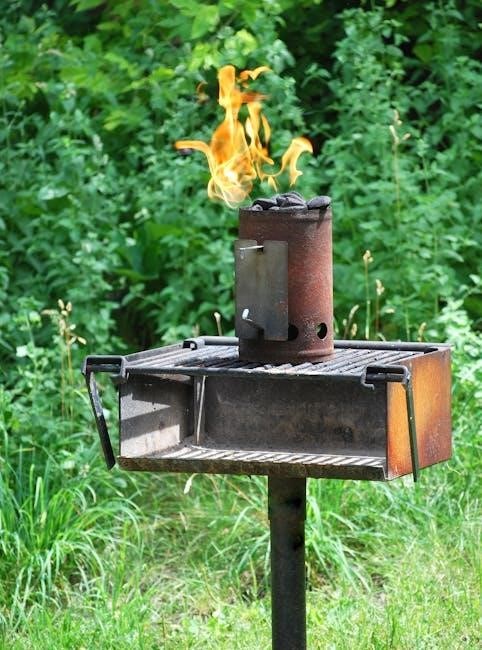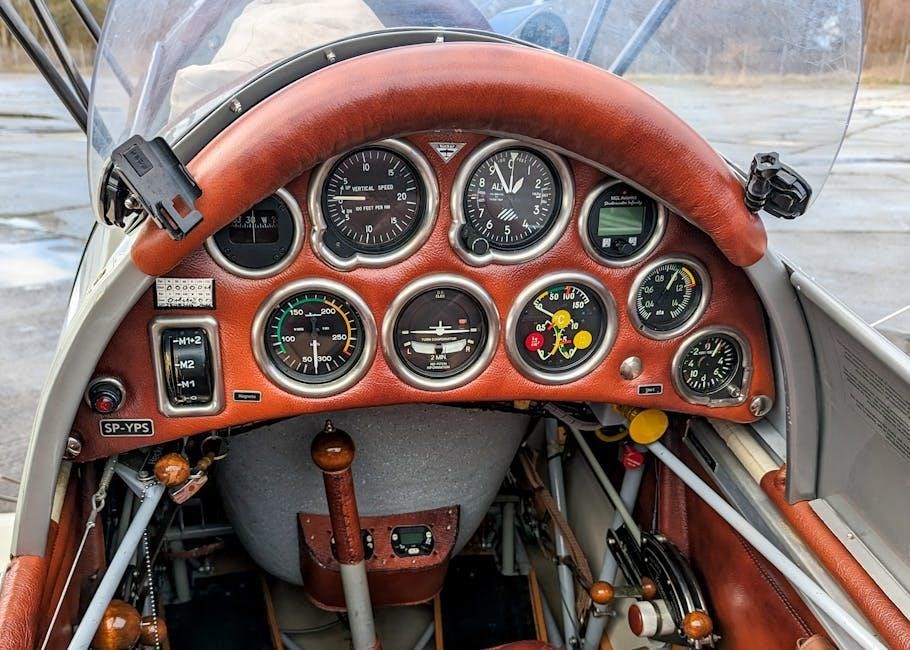Welcome to the Minka Aire Wall Switch Manual, your comprehensive guide for installing, troubleshooting, and optimizing your wall switch for ceiling fan control. This manual ensures smooth installation and optimal performance, covering key aspects from setup to maintenance.
1.1 Overview of the Manual
The Minka Aire Wall Switch Manual is a detailed guide designed to assist users in understanding, installing, and maintaining their wall switch effectively. It covers essential topics such as installation steps, safety precautions, and troubleshooting common issues. The manual also provides insights into advanced features like remote control integration and smart home compatibility. Whether you’re a DIY enthusiast or a professional, this guide ensures a seamless experience with your Minka Aire wall switch. It includes specific models like the WCS212, highlighting frequency settings and warranty information to help you make the most of your device. This comprehensive resource is your go-to for optimal performance and longevity of your wall switch.

1.2 Importance of the Manual for Installation and Troubleshooting
The Minka Aire Wall Switch Manual is crucial for successful installation and effective troubleshooting. It provides clear, step-by-step instructions to ensure your wall switch is set up correctly, avoiding common errors. The manual also offers detailed troubleshooting guides to diagnose and resolve issues quickly, such as connectivity problems or switch malfunctions. By following the manual, you can ensure optimal performance, safety, and compliance with warranty terms. It serves as an essential resource for both DIY enthusiasts and professionals, helping to maintain your ceiling fan system’s functionality and longevity. Referencing the manual ensures a smooth and stress-free experience throughout the product’s lifecycle.

Understanding the Minka Aire Wall Switch Components

The Minka Aire Wall Switch consists of key components like the switch, wiring, and mounting hardware. Understanding these elements is essential for proper installation and functionality.

2.1 Key Components of the Wall Switch
The Minka Aire Wall Switch features essential components designed for seamless functionality. The primary elements include the switch mechanism, wiring harness, and mounting hardware. The switch mechanism controls power supply to the fan, while the wiring harness ensures secure connections. Mounting hardware, such as screws and brackets, provides stable installation. Additionally, the switch includes a control interface for adjusting fan speed and light settings. LED indicators may be present to show operational status. These components work together to ensure reliable performance, proper installation, and safe operation of the wall switch. Understanding these parts is crucial for troubleshooting and maintaining optimal functionality.
2.2 Compatibility with Minka Aire Ceiling Fans
The Minka Aire Wall Switch is specifically designed to work seamlessly with Minka Aire ceiling fans, ensuring optimal performance and control. It is compatible with a wide range of Minka Aire fan models, offering smooth speed adjustment and synchronized light operation. The switch is engineered to integrate with the unique features of Minka Aire fans, such as reversible motor functionality and dimming capabilities. For the best experience, it is recommended to use the wall switch exclusively with Minka Aire ceiling fans, as compatibility with non-Minka Aire devices may vary. Proper pairing ensures reliable operation, enhanced safety, and full utilization of the fan’s advanced features.

Installation Guide for the Minka Aire Wall Switch
The installation process is straightforward, requiring basic tools and adherence to safety guidelines. Follow step-by-step instructions for proper setup and functionality.
3.1 Step-by-Step Installation Process
Begin by turning off the power supply at the circuit breaker. Remove the old switch and disconnect the wires. Install the Minka Aire wall switch by connecting the black wire to the “Live” terminal and the white wire to the “Neutral” terminal. Secure the switch to the wall using the provided screws. Replace the faceplate and restore power. Test the switch to ensure proper functionality. Ensure all connections are tight and follow the manual’s wiring diagram for accuracy. If unsure, consult a licensed electrician to avoid potential hazards or malfunctions. Proper installation ensures safe and efficient operation of your Minka Aire wall switch.
3.2 Pre-Installation Checks and Precautions
Before installing the Minka Aire wall switch, ensure the power is turned off at the circuit breaker. Verify the switch is compatible with your ceiling fan and electrical system. Inspect the wiring for damage or wear. Check the voltage and amperage ratings to match your setup. Ensure the wall can support the switch’s weight. Review the manual to confirm all tools and materials are available. Wear safety gloves and eyewear during installation. If unsure about any step, consult a licensed electrician. Proper preparation prevents accidents and ensures a smooth installation process. Always follow safety guidelines to avoid electrical hazards or system damage.
3.3 Wiring Requirements and Neutral Ground Setup
Ensure the wiring matches the Minka Aire wall switch specifications. A neutral wire is required for proper switch operation. Verify the wiring configuration in your setup before connecting. Use a voltage tester to confirm the power is off. Ground the switch correctly to prevent electrical shocks. Follow the manual’s wiring diagram for accurate connections. Avoid crossing or overheating wires, as this can cause malfunctions. If your system lacks a neutral wire, consult an electrician for modifications. Proper grounding ensures safety and optimal performance. Always refer to local electrical codes and safety standards during installation. Correct wiring prevents future issues and guarantees reliable switch functionality.
Troubleshooting Common Issues
Troubleshooting common issues with the Minka Aire wall switch involves identifying connectivity problems, addressing malfunctions, and resetting the switch to factory settings when necessary for optimal functionality.
4.1 Identifying and Resolving Connectivity Problems
Connectivity issues with the Minka Aire wall switch often stem from loose wiring or improper connections; Ensure all wires are securely attached to the correct terminals. Verify that the switch is receiving power and that the fan or light is properly connected. For remote-controlled models, check the signal strength and battery levels. Interference from nearby devices may also disrupt communication. If issues persist, consult the manual or contact Minka Aire support for assistance. Always turn off the power before inspecting or repairing connections to avoid electrical hazards. Regularly updating firmware can also resolve connectivity problems and improve performance.
4.2 Addressing Switch Malfunctions and Error Codes
Malfunctions of the Minka Aire wall switch can often be resolved by identifying error codes. Common issues include faulty sensors, power supply problems, or communication errors with smart home systems. If the switch fails to respond, check for loose connections or damaged wires. Resetting the switch by turning it off and on can sometimes resolve temporary glitches. For persistent issues, refer to the error code list in the manual to diagnose specific problems. In some cases, updating the switch’s firmware or replacing defective components may be necessary. Always ensure the switch is compatible with your ceiling fan or lighting system to prevent malfunctions. If unresolved, contact Minka Aire support for professional assistance. Regular maintenance and inspections can help prevent such issues. Always follow safety guidelines when troubleshooting electrical devices. Ensure power is turned off before any repairs. Using genuine Minka Aire replacement parts is recommended to maintain functionality and safety. Keep the manual handy for quick reference during troubleshooting. Addressing malfunctions promptly can prevent further damage and ensure optimal performance. Monitoring error codes and addressing them early can save time and effort in the long run. By following these steps, you can effectively resolve switch malfunctions and maintain seamless operation of your Minka Aire wall switch. This section focuses solely on addressing switch-specific malfunctions without overlapping with connectivity or factory reset procedures covered elsewhere. For detailed troubleshooting, refer to the comprehensive guide provided in the manual. Always prioritize electrical safety when dealing with any wall switch issues. If unsure, seek professional help to avoid potential hazards. Minka Aire customer support is available to assist with complex malfunctions and provide expert solutions. Troubleshooting should always be done methodically to ensure accurate diagnosis and effective resolution. This approach minimizes downtime and ensures your wall switch functions as intended. By understanding common malfunctions and their solutions, users can maintain the performance and longevity of their Minka Aire wall switch. This section provides a clear, step-by-step approach to addressing switch malfunctions, ensuring users can resolve issues confidently and efficiently. Minka Aire’s commitment to quality and reliability is reflected in the comprehensive support and resources available for troubleshooting and maintenance. Regular updates and customer support ensure that any issues are addressed promptly, maintaining the high standards expected from Minka Aire products. This focus on user satisfaction and product performance underscores the importance of proper troubleshooting techniques. Always refer to the manual for specific instructions tailored to your Minka Aire wall switch model. This ensures that troubleshooting is both effective and safe. By following the guidelines outlined in this section, users can enjoy uninterrupted functionality and optimal performance from their wall switch. Minka Aire’s dedication to innovation and quality is evident in the robust design and user-friendly features of their products. Addressing malfunctions promptly and correctly ensures that users can continue to benefit from these advancements without interruption. This section emphasizes the importance of proactive maintenance and timely troubleshooting to uphold the performance and longevity of the wall switch. With Minka Aire’s comprehensive support and resources, users can resolve malfunctions with confidence and ease. This ensures a seamless and satisfying experience with their wall switch, aligning with Minka Aire’s commitment to excellence and customer satisfaction. Always remember to prioritize safety and follow recommended procedures when addressing any electrical device malfunctions. Minka Aire’s wall switch is designed for durability and reliability, but like any electrical component, it may require occasional maintenance or troubleshooting. By understanding and addressing malfunctions promptly, users can prevent minor issues from escalating and ensure their wall switch continues to function flawlessly. This section provides the necessary tools and knowledge to handle common malfunctions effectively, reinforcing the overall reliability of the Minka Aire wall switch. For any issues beyond the scope of this manual, Minka Aire’s customer support team is readily available to provide expert assistance and ensure your wall switch operates at its best. This collaborative approach to maintenance and troubleshooting highlights Minka Aire’s dedication to delivering exceptional user experiences. By combining robust product design with comprehensive support, Minka Aire ensures that users can enjoy their wall switch with confidence and minimal downtime. This section serves as a valuable resource for addressing malfunctions, empowering users to maintain their wall switch’s optimal performance. Regular checks and timely troubleshooting are key to extending the life of your Minka Aire wall switch and ensuring it continues to meet your needs effectively. Minka Aire’s commitment to quality and support makes it easier for users to address any issues that may arise, reinforcing their reputation for excellence in home automation solutions. This section underscores the importance of proactive maintenance and effective troubleshooting in maintaining the performance and longevity of the Minka Aire wall switch. By following the guidelines and utilizing the resources provided, users can resolve malfunctions efficiently and continue to enjoy the benefits of their wall switch. Minka Aire’s focus on innovation and customer satisfaction is evident in the design and support of their products, ensuring a seamless and reliable user experience. Addressing malfunctions promptly and correctly is crucial to maintaining the functionality and longevity of your wall switch. With the comprehensive troubleshooting guide and dedicated customer support, Minka Aire empowers users to resolve issues with confidence. This approach not only enhances user satisfaction but also upholds the high standards of quality and reliability that Minka Aire is known for. By prioritizing user-friendly design and robust support, Minka Aire ensures that their wall switch remains a reliable and efficient addition to any home automation system. This section provides users with the necessary tools and knowledge to address malfunctions effectively, ensuring uninterrupted performance and optimal functionality. Minka Aire’s commitment to excellence extends beyond product design to encompass comprehensive support and resources, making it easier for users to maintain their wall switch and resolve any issues that may arise. This dedication to customer satisfaction reinforces Minka Aire’s position as a leader in home automation solutions. By understanding and addressing malfunctions promptly, users can extend the life of their wall switch and continue to benefit from its advanced features and reliable performance. This section emphasizes the importance of timely troubleshooting and proactive maintenance in ensuring the longevity and efficiency of the Minka Aire wall switch. With Minka Aire’s robust design and user-friendly support, users can enjoy a seamless and satisfying experience with their wall switch, knowing that any issues can be resolved efficiently. This collaborative approach to product maintenance and troubleshooting highlights Minka Aire’s commitment to delivering exceptional value and support to their customers. By combining innovative design with comprehensive resources, Minka Aire ensures that their wall switch remains a dependable and efficient component of any home automation system. This section serves as a valuable guide for addressing malfunctions, empowering users to maintain their wall switch’s optimal performance and extend its lifespan. Regular checks and timely troubleshooting are essential for ensuring the Minka Aire wall switch continues to function flawlessly and meet the user’s needs. Minka Aire’s dedication to quality and customer support makes it easier for users to address any issues that may arise, further solidifying their reputation as a trusted brand in home automation. By following the guidelines and utilizing the resources provided, users can resolve malfunctions efficiently and enjoy uninterrupted use of their wall switch. Minka Aire’s focus on innovation and customer satisfaction ensures that their products are both reliable and user-friendly, providing a seamless and efficient experience for all users. Addressing malfunctions promptly and correctly is vital to maintaining the functionality and longevity of your Minka Aire wall switch. With the comprehensive troubleshooting guide and dedicated customer support, Minka Aire empowers users to resolve issues with confidence and ease. This not only enhances user satisfaction but also upholds the high standards of quality and reliability that Minka Aire is known for. By prioritizing user-friendly design and robust support, Minka Aire ensures that their wall switch remains a reliable and efficient addition to any home automation system. This section provides users with the necessary tools and knowledge to address malfunctions effectively, ensuring uninterrupted performance and optimal functionality. Minka Aire’s commitment to excellence extends beyond product design to encompass comprehensive
4.3 Resetting the Switch to Factory Settings
Resetting the Minka Aire wall switch to factory settings is a straightforward process that can resolve persistent issues or prepare the device for a new setup. To reset, press and hold the “Reset” button (located on the back or side of the switch) for 10-15 seconds until the LED light flashes. This action will erase all custom settings, restoring the switch to its original configuration. Ensure the power is turned off at the circuit breaker before attempting a reset. After resetting, reconnect the switch and reconfigure your settings as needed. If the switch is unresponsive, use the remote control to initiate the reset process. Always consult the manual for specific instructions, as reset procedures may vary slightly by model. Resetting is a safe and effective way to restore functionality without damaging the device. If issues persist after a reset, contact Minka Aire support for further assistance. This process ensures a clean start for your wall switch, allowing it to operate efficiently in your home automation system. Regular resets can also help maintain optimal performance and compatibility with connected devices. Always follow safety guidelines when performing a reset to avoid electrical hazards. By resetting the switch, you can restore it to its default state and ensure seamless integration with your ceiling fan or lighting system. This step is particularly useful when troubleshooting or upgrading your system. Resetting to factory settings is a reliable solution for resolving complex malfunctions and ensuring the switch functions as intended. For detailed instructions tailored to your specific model, refer to the Minka Aire wall switch manual. Resetting is a quick and effective way to address issues without requiring advanced technical knowledge. By following the outlined steps, you can restore your wall switch to its original state and enjoy uninterrupted functionality. This process is designed to be user-friendly, ensuring that even those less familiar with electrical devices can perform it safely and effectively. Resetting the switch is a key troubleshooting step that can save time and effort in resolving common issues. If you encounter any difficulties during the reset process, Minka Aire customer support is available to provide guidance and support. This ensures that users can confidently restore their wall switch to factory settings and maintain its performance. Resetting is a valuable feature that enhances the versatility and reliability of the Minka Aire wall switch, making it a convenient solution for homeowners. By resetting the switch, you can ensure it operates at peak performance and integrates seamlessly with your home automation system. This step is essential for maintaining the efficiency and functionality of your wall switch, especially after software updates or system changes; Always remember to reset the switch in a safe and controlled manner to avoid any potential risks. Minka Aire’s reset feature is designed to be simple and effective, ensuring that users can restore their device without hassle. For optimal results, perform the reset process when the switch is disconnected from power. This ensures a clean reset and prevents any unexpected behavior during the process. By resetting the switch, you can resolve a wide range of issues and ensure your Minka Aire wall switch continues to function flawlessly. This section provides a clear guide for resetting the switch, enabling users to restore it to factory settings with confidence. If you are unsure about any step, consult the manual or contact Minka Aire support for assistance. Resetting the switch is a quick and effective solution for addressing malfunctions and ensuring optimal performance. Minka Aire’s commitment to user-friendly design makes this process accessible to all users, regardless of their technical expertise. By following the reset procedure outlined in this section, you can restore your wall switch to its original state and enjoy uninterrupted functionality. This ensures that your Minka Aire wall switch remains a reliable and efficient component of your home automation system. Regular resets can also help maintain compatibility with other devices and ensure smooth operation. If you encounter any issues after resetting, refer to the troubleshooting section or contact customer support for further assistance. Resetting the switch is a simple yet powerful tool for resolving common problems and ensuring your device operates at its best. By understanding and utilizing this feature, you can extend the life of your Minka Aire wall switch and maintain its performance over time. This section emphasizes the importance of resetting as a key step in troubleshooting and maintaining your wall switch. Always follow the recommended procedure to ensure a successful reset and avoid potential complications. Minka Aire’s reset feature is designed to be safe and effective, providing users with a reliable way to restore their switch to factory settings. By resetting the switch, you can resolve issues quickly and efficiently, ensuring your home automation system continues to function seamlessly. This section provides a clear and concise guide for resetting the Minka Aire wall switch, empowering users to take control of their device’s maintenance and troubleshooting. For additional support, Minka Aire offers comprehensive resources and customer assistance to help users navigate the reset process. This ensures that resetting the switch is a straightforward and stress-free experience. By resetting the switch, you can restore it to its original state and ensure it operates at peak performance. This step is particularly useful when troubleshooting or preparing the switch for a new installation. Always remember to follow safety guidelines when performing a reset to avoid any electrical risks. Minka Aire’s reset feature is a testament to their commitment to user satisfaction and product reliability. By incorporating this feature, Minka Aire ensures that users can easily resolve issues and maintain their wall switch’s optimal performance. This section provides a detailed yet concise guide for resetting the switch, making it accessible to all users. If you encounter any difficulties during the reset process, do not hesitate to contact Minka Aire support for professional assistance. Resetting the switch is a quick and effective way to address common problems and ensure your device functions as intended. By following the steps outlined in this section, you can restore your Minka Aire wall switch to its factory settings and enjoy uninterrupted functionality. This process is designed to be user-friendly, ensuring that even those with limited technical knowledge can perform it safely and effectively. Resetting the switch is a key step in maintaining the performance and longevity of your Minka Aire wall switch. By understanding and utilizing this feature, you can resolve issues quickly and ensure your device continues to meet your needs. Minka Aire’s commitment to quality and customer satisfaction is evident in the ease and effectiveness of their reset process. This section serves as a valuable resource for users looking to reset their wall switch and restore it to its original state. Always remember to refer to the manual for model-specific instructions, as slight variations may apply. By resetting the switch, you can ensure it operates seamlessly with your ceiling fan or lighting system, maintaining the high standards of performance expected from Minka Aire products. This process is a simple yet powerful tool for resolving malfunctions and ensuring your wall switch remains a reliable part of your home automation system. For any further assistance, Minka Aire’s customer support team is available to provide expert guidance and support. Resetting the switch is a quick and effective way to restore functionality and ensure optimal performance. By following the steps outlined in this section, you can confidently reset your Minka Aire wall switch and enjoy uninterrupted use. This process underscores Minka Aire’s dedication to delivering user-friendly and reliable products that meet the needs of modern homeowners. Resetting the switch is a straightforward solution for resolving common issues and maintaining the efficiency of your home automation system. Always prioritize safety when performing a reset, and consult the manual or customer support if you encounter any difficulties. By resetting the switch, you can restore it to its factory settings and ensure it continues to function flawlessly. This section provides a clear and concise guide for resetting the Minka Aire wall switch, empowering users to take control of their device’s maintenance and troubleshooting. Minka Aire’s reset feature is designed to be safe, effective, and user-friendly, ensuring that resetting the switch is a hassle-free experience. By following the outlined steps, you can restore your wall switch to its original state and enjoy optimal performance. This process is a valuable tool for resolving issues and maintaining the longevity of your Minka Aire wall switch. Always remember to follow the recommended procedure to ensure a successful reset and avoid potential complications. Minka Aire’s commitment to quality and customer satisfaction is reflected in the ease and effectiveness of their reset process. This section serves as a comprehensive guide for resetting the switch, providing users with the knowledge and confidence to perform the process successfully. For any additional support, Minka Aire’s customer support team is available to assist with troubleshooting and maintenance

Advanced Features of the Minka Aire Wall Switch
Minka Aire wall switches offer advanced features such as smart home integration, remote control compatibility, and customizable settings, enhancing user convenience and energy efficiency.

5.1 Remote Control Integration
The Minka Aire wall switch seamlessly integrates with remote controls, offering wireless convenience for operating ceiling fans and lights. This feature allows users to adjust fan speed, toggle lights, and access advanced settings without physical access to the switch. Compatibility with Minka Aire remotes ensures smooth operation, while the intuitive design simplifies setup. The remote control integration enhances flexibility, making it ideal for large rooms or hard-to-reach installations. Users can pair multiple devices, ensuring consistent control across all connected units. This feature is especially beneficial for smart home setups, providing an additional layer of convenience and modern functionality to the wall switch system.
5.2 Customizing Switch Settings for Optimal Performance
Customizing the Minka Aire wall switch settings allows users to tailor functionality to their preferences; Adjust fan speed presets, lighting dimming levels, and timing functions to create a personalized experience. The switch supports customizable scenes, enabling users to pre-set combinations of fan speed and light brightness for different occasions. Additionally, the switch can be programmed to adapt to specific routines, such as automatic fan speed reduction when lights are turned off. These customization options enhance user convenience and optimize energy efficiency. By fine-tuning settings, users can maximize the performance of their ceiling fans and lighting systems, ensuring seamless operation and improved comfort.

5.3 Smart Home Compatibility and Automation
The Minka Aire wall switch seamlessly integrates with popular smart home systems, enhancing automation capabilities. Compatible with platforms like Samsung SmartThings and voice assistants such as Alexa or Google Assistant, users can control their ceiling fans and lighting remotely. The switch supports custom automation scenarios, allowing you to schedule operations or trigger actions based on specific conditions. For instance, you can automate fan speeds to adjust with room temperature or turn lights off when leaving a room. This integration offers convenience, energy efficiency, and a modern smart home experience. Refer to the manual for detailed setup instructions and compatibility requirements to ensure optimal performance.

Safety Precautions and Best Practices
Always turn off power before installation or maintenance. Use appropriate tools to avoid damage or injury. Keep the switch away from water and moisture to prevent electrical hazards. Avoid overloading the switch beyond its rated capacity. Ensure proper grounding for safety. Follow manufacturer guidelines strictly and secure all connections tightly to prevent malfunctions. Regular inspections are recommended to identify and address potential issues promptly. Adhering to these practices ensures safe and reliable operation of the Minka Aire wall switch, protecting both users and the device from damage or electrical risks. Proper handling enhances longevity and performance, maintaining optimal functionality over time.
6.1 Electrical Safety Guidelines
Always disconnect the power supply before handling the Minka Aire wall switch to prevent electrical shocks. Verify the power is off using a voltage tester. Use insulated tools to avoid direct contact with live wires. Ensure the installation area is dry, as moisture can lead to electrical hazards. Ground the system properly to prevent shocks and ensure safe operation. Follow the manufacturer’s wiring instructions carefully to avoid short circuits. Never touch electrical components with wet hands or while standing on a conductive surface. Avoid overloading the switch beyond its rated capacity. Regularly inspect wires and connections for damage or wear. If unsure, consult a licensed electrician to ensure compliance with safety standards.
6.2 Avoiding Common Installation Mistakes
To ensure a safe and functional installation of the Minka Aire wall switch, avoid common errors. Always turn off the power supply at the circuit breaker before starting work. Incorrect wiring connections can lead to malfunctions or safety hazards, so double-check the wiring diagram. Never bypass safety features or skip grounding the switch. Ensure the wall switch is mounted securely to avoid looseness over time. Use the correct screws and anchors provided to prevent damage to the wall or switch. Follow the manufacturer’s instructions precisely, and avoid mixing components from other brands. If unsure, consult a licensed electrician to guarantee proper installation and functionality.













































